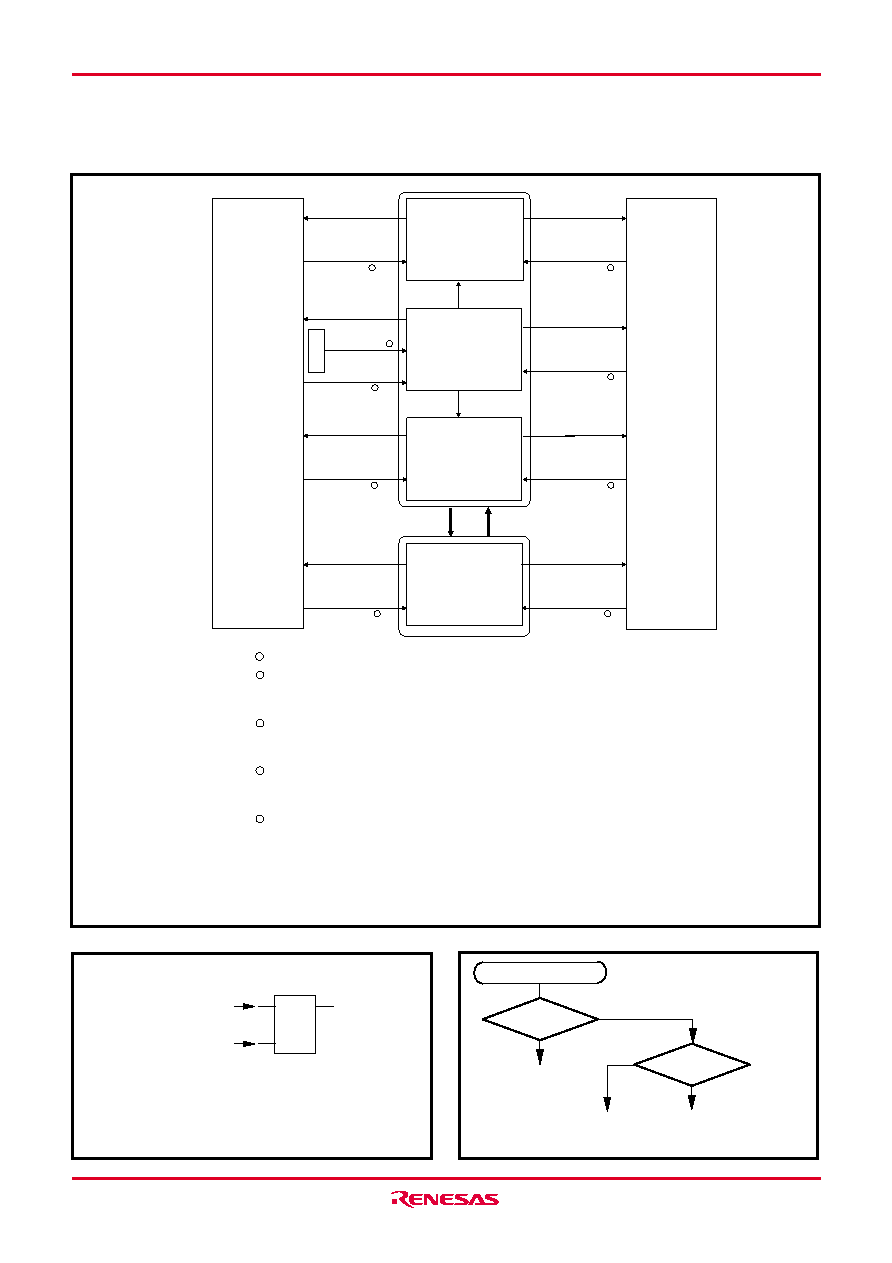- 您現(xiàn)在的位置:買賣IC網(wǎng) > PDF目錄98005 > M34524MC-XXXFP 4-BIT, MROM, 6 MHz, MICROCONTROLLER, PQFP64 PDF資料下載
參數(shù)資料
| 型號: | M34524MC-XXXFP |
| 元件分類: | 微控制器/微處理器 |
| 英文描述: | 4-BIT, MROM, 6 MHz, MICROCONTROLLER, PQFP64 |
| 封裝: | 14 X 14 MM, 0.80 MM PITCH, PLASTIC, QFP-64 |
| 文件頁數(shù): | 128/161頁 |
| 文件大?。?/td> | 1199K |
| 代理商: | M34524MC-XXXFP |
第1頁第2頁第3頁第4頁第5頁第6頁第7頁第8頁第9頁第10頁第11頁第12頁第13頁第14頁第15頁第16頁第17頁第18頁第19頁第20頁第21頁第22頁第23頁第24頁第25頁第26頁第27頁第28頁第29頁第30頁第31頁第32頁第33頁第34頁第35頁第36頁第37頁第38頁第39頁第40頁第41頁第42頁第43頁第44頁第45頁第46頁第47頁第48頁第49頁第50頁第51頁第52頁第53頁第54頁第55頁第56頁第57頁第58頁第59頁第60頁第61頁第62頁第63頁第64頁第65頁第66頁第67頁第68頁第69頁第70頁第71頁第72頁第73頁第74頁第75頁第76頁第77頁第78頁第79頁第80頁第81頁第82頁第83頁第84頁第85頁第86頁第87頁第88頁第89頁第90頁第91頁第92頁第93頁第94頁第95頁第96頁第97頁第98頁第99頁第100頁第101頁第102頁第103頁第104頁第105頁第106頁第107頁第108頁第109頁第110頁第111頁第112頁第113頁第114頁第115頁第116頁第117頁第118頁第119頁第120頁第121頁第122頁第123頁第124頁第125頁第126頁第127頁當前第128頁第129頁第130頁第131頁第132頁第133頁第134頁第135頁第136頁第137頁第138頁第139頁第140頁第141頁第142頁第143頁第144頁第145頁第146頁第147頁第148頁第149頁第150頁第151頁第152頁第153頁第154頁第155頁第156頁第157頁第158頁第159頁第160頁第161頁

Rev.2.00
Jul 27, 2004
page 69 of 159
REJ03B0091-0200Z
4524 Group
Fig. 55 State transition
Fig. 56 Set source and clear source of the P flag
Fig. 57 Start condition identified example using the SNZP instruction
S
R
Q
Power down flag P
POF or
POF2
instruction
Reset input
q Set source
q Clear source
Reset input
EPOF instruction +
POF or
POF2
instruction
EPOF instruction +
Program start
P = “1”
?
Yes
Warm start
Cold start
No
T5F = “1”
?
Yes
No
Return from
timer 5 underflow
Return from
external wakeup signal
Reset
B
Operation state
Operation source clock: f(XIN)
Oscillation circuit:
Ceramic resonator
On-chip oscillator: Stop
RC oscillation circuit: Stop
A
C
E
Clock operating mode
Main clock: stop
Sub-clock: operating
Wakeup
(Stabilizing time c )
POF2 instruction
execution
F
RAM back-up mode
POF2 instruction
execution
High-speed mode
D
Operation clock: f(XCIN)
Oscillation circuit:
Quartz-crystal oscillation
MR0
←0
(Note 4)
MR0
←1
(Note 4)
Low-speed
mode
Wakeup
(Stabilizing time b )
POF2 instruction
execution
Wakeup
(Stabilizing time d )
POF2 instruction
execution
Wakeup
(Stabilizing time e )
POF instruction
execution
Wakeup
(Stabilizing time e )
POF instruction
execution
Wakeup
(Stabilizing time d )
POF instruction
execution
Wakeup
(Stabilizing time b )
(Stabilizing time a )
POF instruction
execution
Wakeup
(Stabilizing time c )
Main clock: stop
Sub-clock: stop
CMCK instruction
execution (Note 3)
Operation state
Operation source clock:
f(RING)
Oscillation circuit:
On-chip oscillator
Ceramic resonator:
Operating (Note 2)
RC oscillation circuit: Stop
CRCK instruction
execution (Note 3)
Operation state
Operation source clock: f(XIN)
Oscillation circuit:
RC oscillation
On-chip oscillator: Stop
Ceramic resontor: Stop
Operation state
Stabilizing time a : Microcomputer starts its operation after counting the on-chip oscillator clock 5400 to 5424 times.
Stabilizing time b : In high-speed through-mode, microcomputer starts its operation after counting the f(RING) 675 times.
In high-speed/2 mode, microcomputer starts its operation after counting the f(RING) 1350 times.
In high-speed/4 mode, microcomputer starts its operation after counting the f(RING) 2700 times.
In high-speed/8 mode, microcomputer starts its operation after counting the f(RING) 5400 times.
Stabilizing time c : In high-speed through-mode, microcomputer starts its operation after counting the f(XIN) 675 times.
In high-speed/2 mode, microcomputer starts its operation after counting the f(XIN) 1350 times.
In high-speed/4 mode, microcomputer starts its operation after counting the f(XIN) 2700 times.
In high-speed/8 mode, microcomputer starts its operation after counting the f(XIN) 5400 times.
Stabilizing time d : In high-speed through-mode, microcomputer starts its operation after counting the f(XIN) 21 times.
In high-speed/2 mode, microcomputer starts its operation after counting the f(XIN) 42 times.
In high-speed/4 mode, microcomputer starts its operation after counting the f(XIN) 84 times.
In high-speed/8 mode, microcomputer starts its operation after counting the f(XIN) 168 times.
Stabilizing time e : In low-speed through-mode, microcomputer starts its operation after counting the f(XCIN) 675 times.
In low-speed/2 mode, microcomputer starts its operation after counting the f(XCIN) 1350 times.
In low-speed/4 mode, microcomputer starts its operation after counting the f(XCIN) 2700 times.
In low-speed/8 mode, microcomputer starts its operation after counting the f(XCIN) 5400 times.
Notes 1: Continuous execution of the EPOF instruction and the POF instruction is required to go into the clock operating state.
Continuous execution of the EPOF instruction and the POF2 instruction is required to go into the RAM back-up state.
2: Through the ceramic resonator is operating, the on-chip oscillator clock is selected as the operation source clock.
3: The oscillator clock corresponding to each instruction is selected as the operation source clock, and the on-chip oscillator is stopped.
4: The main clock (f(XIN) or f(RING)) or sub-clock (f(XCIN)) is selected for operation source clock by the bit 0 of clock control register MR.
5: The sub-clock (quartz-crystal oscillation) is operating except in state F.
T5F
相關(guān)PDF資料 |
PDF描述 |
|---|---|
| M34550E8FS | 4-BIT, UVPROM, 1.6 MHz, MICROCONTROLLER, CQCC80 |
| M34551E8-XXXFP | 4-BIT, OTPROM, MICROCONTROLLER, PQFP48 |
| M34554M8-XXXFP | 4-BIT, MROM, 6 MHz, MICROCONTROLLER, PQFP64 |
| M34554MC-XXXFP | 4-BIT, MROM, 6 MHz, MICROCONTROLLER, PQFP64 |
| M34571G6FP | 4-BIT, MROM, 6 MHz, MICROCONTROLLER, PDSO24 |
相關(guān)代理商/技術(shù)參數(shù) |
參數(shù)描述 |
|---|---|
| M3452-C09K1 | 制造商:Bonitron 功能描述:OVERVOLTAGE BRAKING TRANSISTOR |
| M3452-C125K2 | 制造商:Bonitron 功能描述:OVERVOLTAGE BRAKING TRANSISTOR |
| M3452-C125K2,A | 制造商:Bonitron 功能描述:OVERVOLTAGE BRAKING TRANSISTOR |
| M3452-C150B7 | 制造商:Bonitron 功能描述:OVERVOLTAGE BRAKING TRANSISTOR |
| M3452-C150B7-A | 制造商:Bonitron 功能描述:OVERVOLTAGE BRAKING TRANSISTOR |
發(fā)布緊急采購,3分鐘左右您將得到回復(fù)。